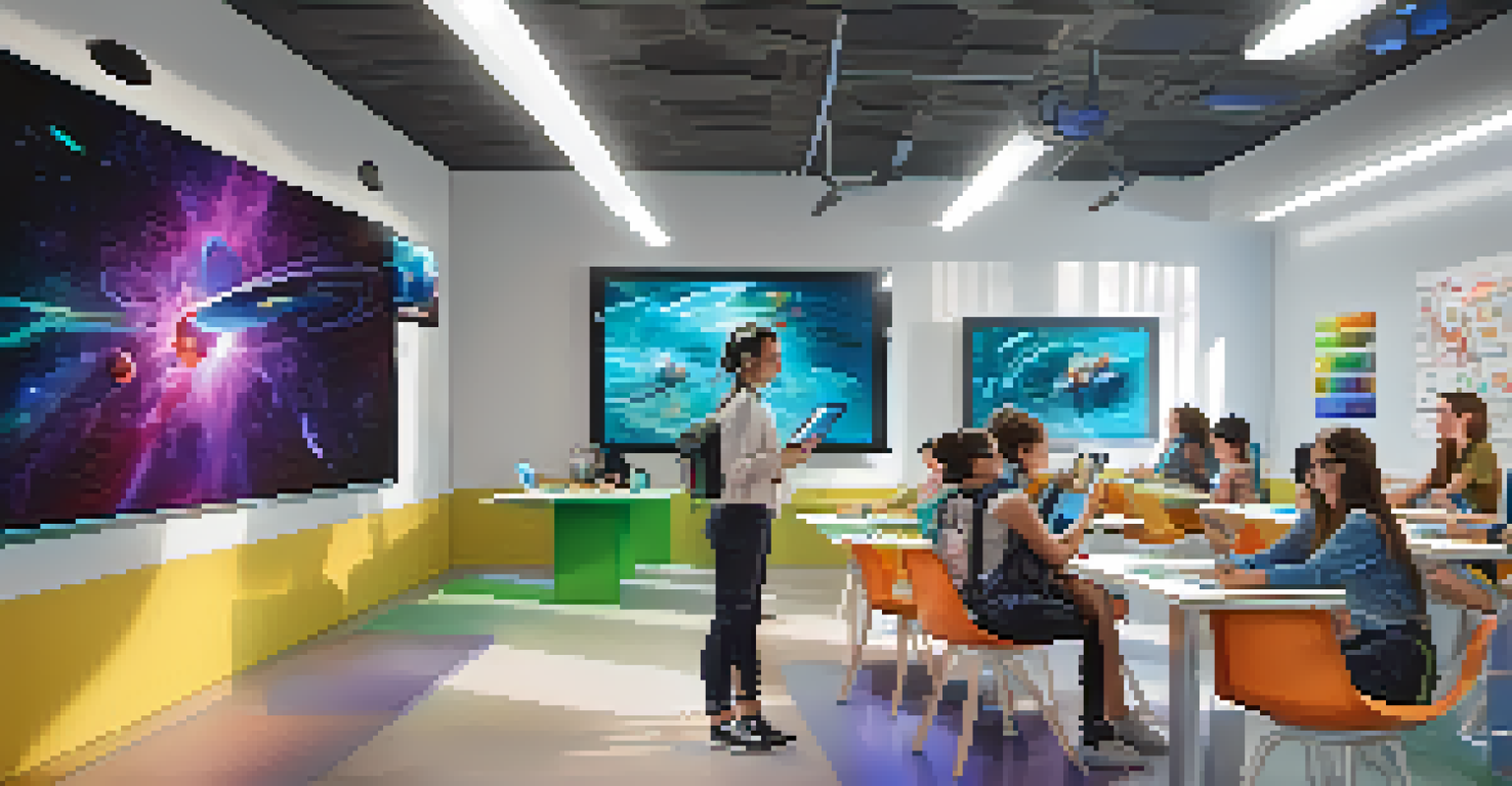The Role of Multimedia in Enhancing Digital Storytelling

Understanding Digital Storytelling and Its Importance
Digital storytelling is an engaging way to share narratives using digital media. It combines traditional storytelling techniques with modern technology, allowing for a deeper connection with the audience. This form of storytelling is crucial in today’s fast-paced digital world, where attention spans are short and competition is high.
Storytelling is the most powerful way to put ideas into the world today.
By integrating elements like text, images, audio, and video, digital storytelling can convey complex messages more effectively. For instance, a documentary about climate change can use visuals of melting glaciers alongside expert interviews to evoke emotions and drive the point home. This combination of multimedia creates a richer experience for the viewer.
Ultimately, effective digital storytelling can inspire action, provoke thought, and foster a sense of community among audiences. Whether it's through social media campaigns or interactive websites, the ability to tell compelling stories in a digital format is more important than ever.
The Power of Visuals in Storytelling
Visual elements are often the first thing that draws a viewer into a story. Images, infographics, and videos can communicate ideas quickly and powerfully. For example, a well-placed photograph can evoke emotions and set the tone of a story instantly, far more than text alone could achieve.

Furthermore, visuals help to break up large blocks of text, making content more digestible and engaging. Think about how infographics can simplify complex data, turning statistics into easy-to-understand visuals that the audience can relate to. This not only keeps readers engaged but also aids in retention of information.
Digital Storytelling Connects Audiences
By combining text, images, audio, and video, digital storytelling creates deeper connections with audiences and inspires action.
Incorporating high-quality visuals can also enhance brand perception. A company that uses striking images and videos in their storytelling is often viewed as more professional and credible, which can lead to increased trust from their audience.
Audio: The Unsung Hero of Digital Narratives
While visuals grab attention, audio elements like voiceovers and sound effects can add depth and emotion to a story. A well-narrated piece can guide the audience through the narrative, offering context that visuals alone might miss. Think about how a soothing voice can evoke calmness in a meditation app versus a fast-paced tone in an action movie trailer.
The best stories are those that are shared and experienced, not just told.
Music also plays a crucial role in setting the mood and enhancing the emotional impact of a story. For instance, the right soundtrack can transform a simple video into a compelling experience, making viewers feel joy, sadness, or excitement. This emotional connection is vital in keeping audiences engaged.
Moreover, podcasts have surged in popularity, demonstrating the power of audio storytelling in the digital realm. They allow listeners to connect with narratives while multitasking, making stories accessible anytime and anywhere.
Interactivity: Engaging the Audience
Interactivity is a game-changer in digital storytelling, inviting the audience to participate rather than just observe. Features like quizzes, polls, and interactive videos allow users to engage with the content actively. For example, a travel website might offer an interactive map that lets users explore different destinations and read stories from travelers.
This level of engagement can lead to deeper connections with the material, as users feel a sense of ownership over their experience. When audiences can influence the narrative, they are more likely to remember and share it. This not only enhances their enjoyment but also increases the content's reach.
Visuals Enhance Engagement and Retention
High-quality visuals capture attention and simplify complex information, making content more digestible and memorable.
Additionally, interactive storytelling can provide valuable feedback for creators. By analyzing how users interact with content, storytellers can gain insights into what resonates with their audience, allowing for continuous improvement and innovation.
The Importance of Cohesion in Multimedia Storytelling
While using various multimedia elements can enhance a story, it's crucial to ensure they work together cohesively. A disjointed narrative can confuse the audience and diminish the impact of the message. For example, if the visuals and audio convey different tones, the audience may feel lost and disengaged.
Creating a unified experience requires careful planning and a clear understanding of the story's message. Each element should complement one another, whether it’s through consistent branding, thematic visuals, or matching the audio style. This cohesion fosters a smoother viewing experience and reinforces the core narrative.
Ultimately, when multimedia components harmonize, they create a stronger, more memorable story. This unity helps to establish a clear brand identity and enhances audience loyalty, making them more likely to return for more content.
The Role of Technology in Multimedia Storytelling
Advancements in technology have significantly transformed digital storytelling, allowing creators to experiment with new formats and tools. From augmented reality (AR) to virtual reality (VR), these technologies offer immersive experiences that can transport audiences into the narrative. Imagine walking through a historical event as if you were actually there, thanks to VR.
Additionally, tools like video editing software and graphic design applications enable storytellers to enhance their narratives effortlessly. For example, a simple video can be transformed into a captivating story with the right editing techniques and effects. These tools democratize storytelling, making it accessible to anyone with a passion to share their story.
Interactivity Boosts Audience Participation
Interactive elements invite audiences to engage actively with the content, leading to stronger connections and increased sharing.
However, with great technology comes great responsibility. Creators must balance innovation with authenticity, ensuring that the story remains relatable and resonates with the audience. Ultimately, technology should serve the narrative, not overshadow it.
The Future of Multimedia Storytelling
As digital media continues to evolve, so will the ways we tell stories. Emerging technologies like artificial intelligence (AI) and machine learning are paving the way for personalized storytelling experiences. Imagine a platform that tailors a story to your preferences based on your viewing history—this could revolutionize how we consume content.
Moreover, the integration of multimedia in education and training is also on the rise. Interactive e-learning platforms utilize storytelling techniques to engage students, making learning more enjoyable and effective. This trend highlights the versatility of multimedia storytelling across various sectors.

Looking ahead, embracing new formats and technologies will be essential for storytellers who want to stay relevant. By continually adapting and innovating, they can captivate audiences and create impactful narratives that resonate in an ever-changing digital landscape.